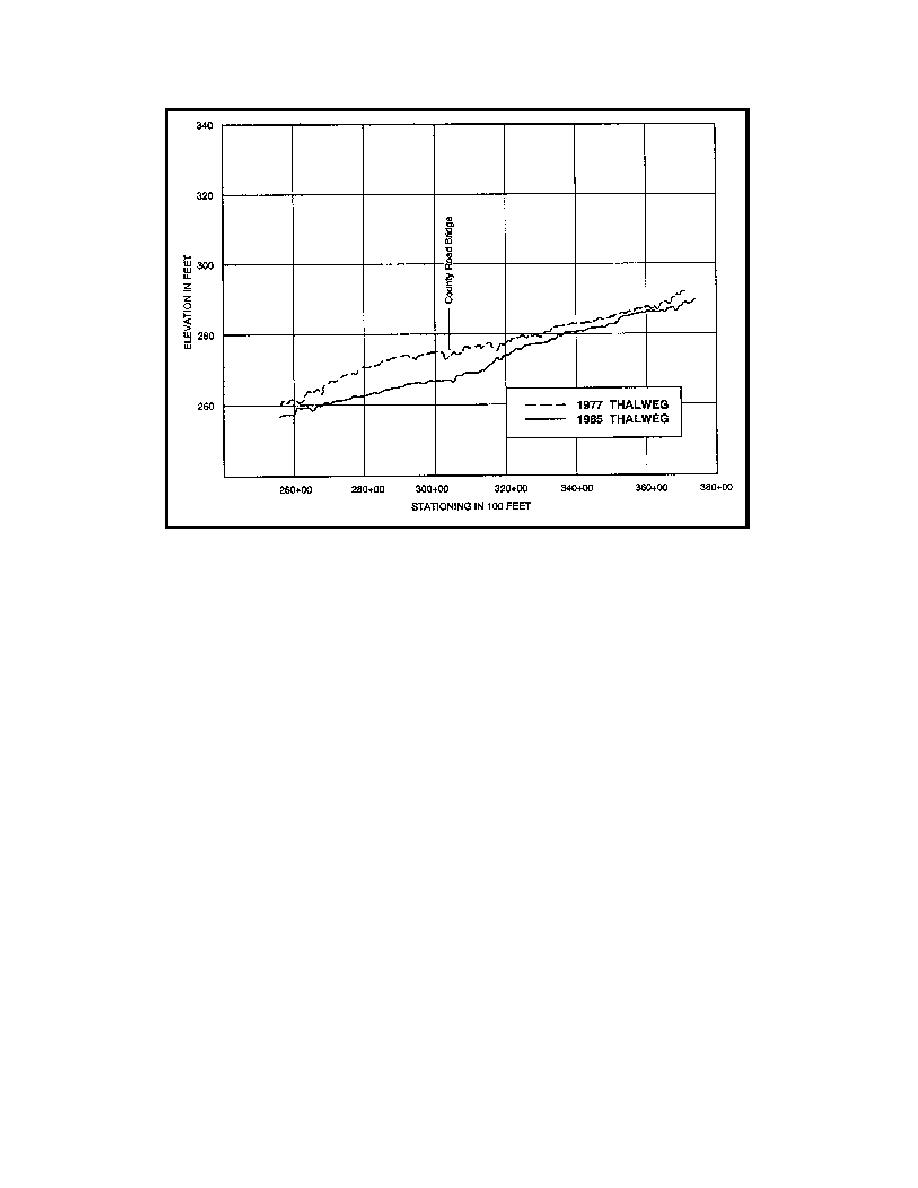
Fundamentals of Engineering Design
Figure 5.16 Comparative Thalweg Profiles for Long Creek, Mississippi
Focusing on the crossing elevations may eliminate much of the local variation due to bed scour in
bendways, thereby, allowing aggradational or degradational trends to be more easily observable.
5.1.6.3 Analysis of Cross Section Geometry
Section 5.1.6.2 addressed the use of comparative thalweg profiles to assess the stability of a
channel system. While thalweg profiles are a useful tool it must be recognized that they only reflect how
the behavior of the channel bed and do not provide information about the channel as a whole. For this
reason it is often advisable to study the changes in the overall cross sectional geometry. Cross sectional
geometry refers to width, depth, area, wetted perimeter, hydraulic radius, and channel conveyance (AR2/3)
at a specific cross section.
If channel cross sections are surveyed at permanent range locations then channel geometry, as
reflected by depth, width, area, width-depth ratio, and conveyance (usually calculated as AR2/3) can be
compared directly at different time periods. At each range, the cross section plots for the various time
periods can be overlaid and compared.
One problem with the above method is that there may be so many cross sections that it becomes
impossible to interpret the results. Another problem is that it is seldom the case that the cross sections are
located in the exact same place year after year. Because of these problems it is often advisable to compare
136



 Previous Page
Previous Page
